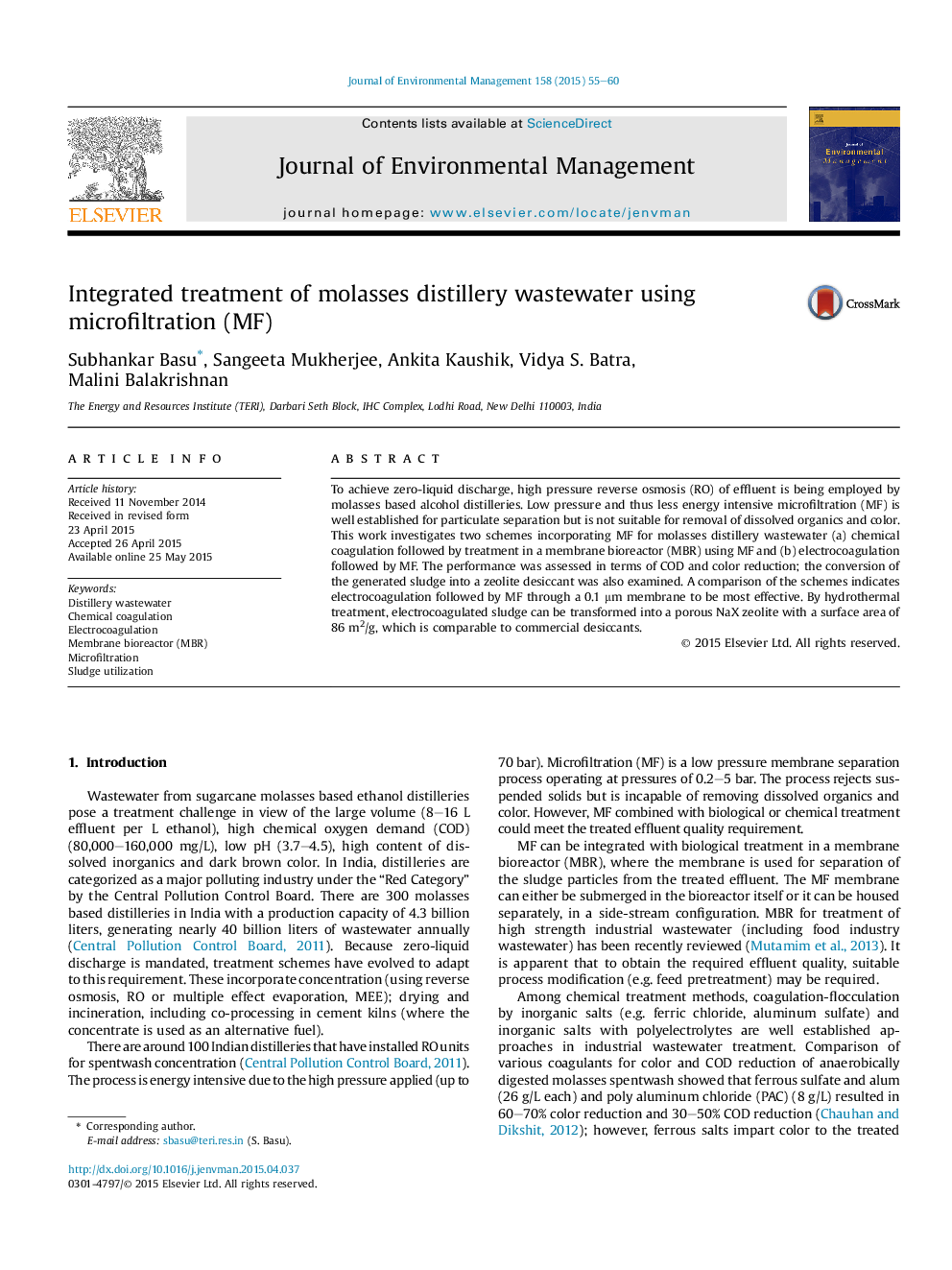| Article ID | Journal | Published Year | Pages | File Type |
|---|---|---|---|---|
| 1055579 | Journal of Environmental Management | 2015 | 6 Pages |
•Microfiltration (MF) based schemes were tested for distillery wastewater treatment.•Electrocoagulation-MF is superior to chemical coagulation-membrane bioreactor.•Electrocoagulation sludge can be converted to porous zeolite material.•Biological treatment of coagulated wastewater is not suitable for color removal.
To achieve zero-liquid discharge, high pressure reverse osmosis (RO) of effluent is being employed by molasses based alcohol distilleries. Low pressure and thus less energy intensive microfiltration (MF) is well established for particulate separation but is not suitable for removal of dissolved organics and color. This work investigates two schemes incorporating MF for molasses distillery wastewater (a) chemical coagulation followed by treatment in a membrane bioreactor (MBR) using MF and (b) electrocoagulation followed by MF. The performance was assessed in terms of COD and color reduction; the conversion of the generated sludge into a zeolite desiccant was also examined. A comparison of the schemes indicates electrocoagulation followed by MF through a 0.1 μm membrane to be most effective. By hydrothermal treatment, electrocoagulated sludge can be transformed into a porous NaX zeolite with a surface area of 86 m2/g, which is comparable to commercial desiccants.
